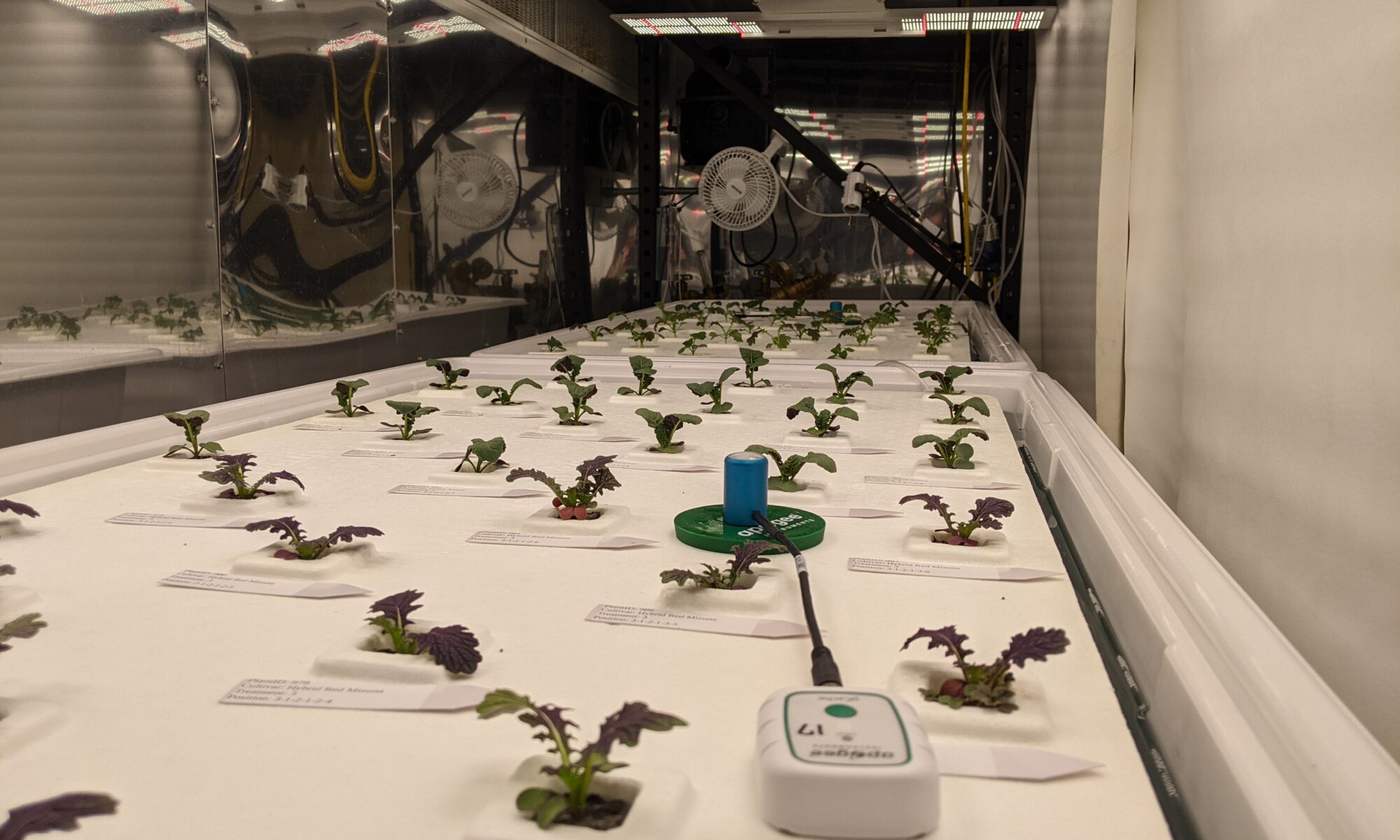
Ethan Darby, who recently graduated with his master’s degree in plant sciences, received the prestigious invitation of presenting his thesis defense to members of the NASA Kennedy Space Center on January 23, 2024.
Darby gave his thesis defense, or presentation of research results, to his thesis research committee and members of the Department of Plant Sciences last November. After the defense Gioia Massa, research scientist at NASA Kennedy Space Center, invited Darby to present to other NASA scientists during a virtual lunch and learn. The event included members of NASA’s plant science unit, plant biologists from NASA Ames Research Center in California, and researchers from other universities.
Kellie Walters, assistant professor in plant sciences and lead researcher for this work, expressed, “Ethan’s invitation to present at the NASA lunch and learn was a testament to his excellent research and presentation skills.”
When asked about his experience speaking to such highly respected scientists, Darby said, “I thought I was going to be a lot more nervous, but I was less nervous than during my thesis defense.” He further explained that presenting his research beforehand had more than prepared him to lead the lunch and learn.
Darby’s road to UT Knoxville and working with NASA started with a desire to pursue more advanced careers in research. After graduating from Utah Valley University and working as a strawberry research technician at a vertical farming company, he realized that earning a master’s degree would open greater career opportunities in his field.
The plant sciences program in the Herbert College of Agriculture particularly piqued his interest because of Walters’ connection with NASA. He knew this opportunity would not only provide unparalleled research experience, but would also help him build valuable connections with esteemed scientists.
The NASA research project was the result of the first federal grant proposal Walters submitted. “After the project was funded,” she explained, “I knew I needed to find a great student to execute the proposed research.” Luckily, she found Darby. “Ethan took the proposal funded by NASA and went above and beyond, nearly doubling the amount of work completed and molding pieces to make sense from a scientific and practical perspective.”
For the research project itself, Darby explained that the ultimate goal is to optimize mizuna, “the spiky purple plant you see at the grocery store,” to increase the nutritional value of the astronaut’s diet. Because astronauts can be gone for months to years at a time and primarily eat dehydrated meals, they’re at risk of vitamin C deficiency, among other key vitamins and nutrients, from lack of fruits and vegetables.
The research project was organized by three objectives or “phases.” First, Walters and Darby determined which cultivars of Brassica, or types of mizuna and related greens, produced the most promising phytonutrient (plant-produced nutrients) and morphological profiles for production in space. They then looked at how different light environments could increase such phytonutrient concentrations. Lastly, they worked at implementing a harvest strategy that would maintain high phytonutrient concentrations over time.
Ultimately, the research project not only investigates the best conditions for growing mizuna in a space-like environment, but it identifies strategies for maintaining nutrient quality when grown in such conditions. These findings are crucial for the health of astronauts and the success of future long-term space exploration.
Along with this research experience, Darby mentioned that working with NASA has been incredibly rewarding for the professional development opportunities. For example, he attended the American Society for Gravitational and Space Research’s (ASGSR) annual conference in Washington, DC. He said such opportunities have helped him understand “the value of networks.”
Additionally, Darby has presented his research at other conferences, like the international meeting of North Central Extension and Research Activity-101 (NCERA-101), for example. This past February, Walters also presented Darby’s work at the NASA Human Research Program Investigators Workshop in Galveston, Texas, and during a seminar at the Baylor College of Medicine.
Walters said, “Sharing his research is not only important from a scientific communication perspective, but also from a professional standpoint. Building a network is incredibly important and something I try to emphasize in my program. Ethan now has connections across the US and the world.”
Darby expressed his gratitude toward the Herbert College of Agriculture and the Department of Plant Sciences for providing sufficient access to funding to attend conferences, and to pursue assistantships to do research. He said that he always “felt supported in the way he wanted to go through the program.”
Walters added, “Ethan did a fantastic job during his master’s. I plan to have a continued relationship with NASA and Ethan really helped set a solid foundation for future collaborations.”
As a recent Herbert graduate, Darby now works as a full-time researcher in Tabibul Islam’s controlled environment and fruit physiology lab. He believes his graduate experience has contributed significantly to his professional success through learning how to conduct a research project from start to finish, and how to manage people, like undergraduate researchers, to achieve projects.
Walters regarded Darby as “an excellent colleague and mentor.” She further explained that because his thesis project was quite intensive, he did not have the time to complete any greenhouse experiments like he hoped. He did, however, mentor two undergraduate students in greenhouse production experiments, which will yield at least two more peer-reviewed publications.
Darby’s final remarks about the research project and the NASA lunch and learn opportunity revolved around his admiration for Walters. He said, “I’ve never seen someone work so hard and that efficiently.” While intimidating at first, Darby said Walters has shown him the value of work ethic and how far it can take you.
Darby’s master’s thesis on the NASA research project can be reached here, and his first peer-reviewed publication can be found here.
